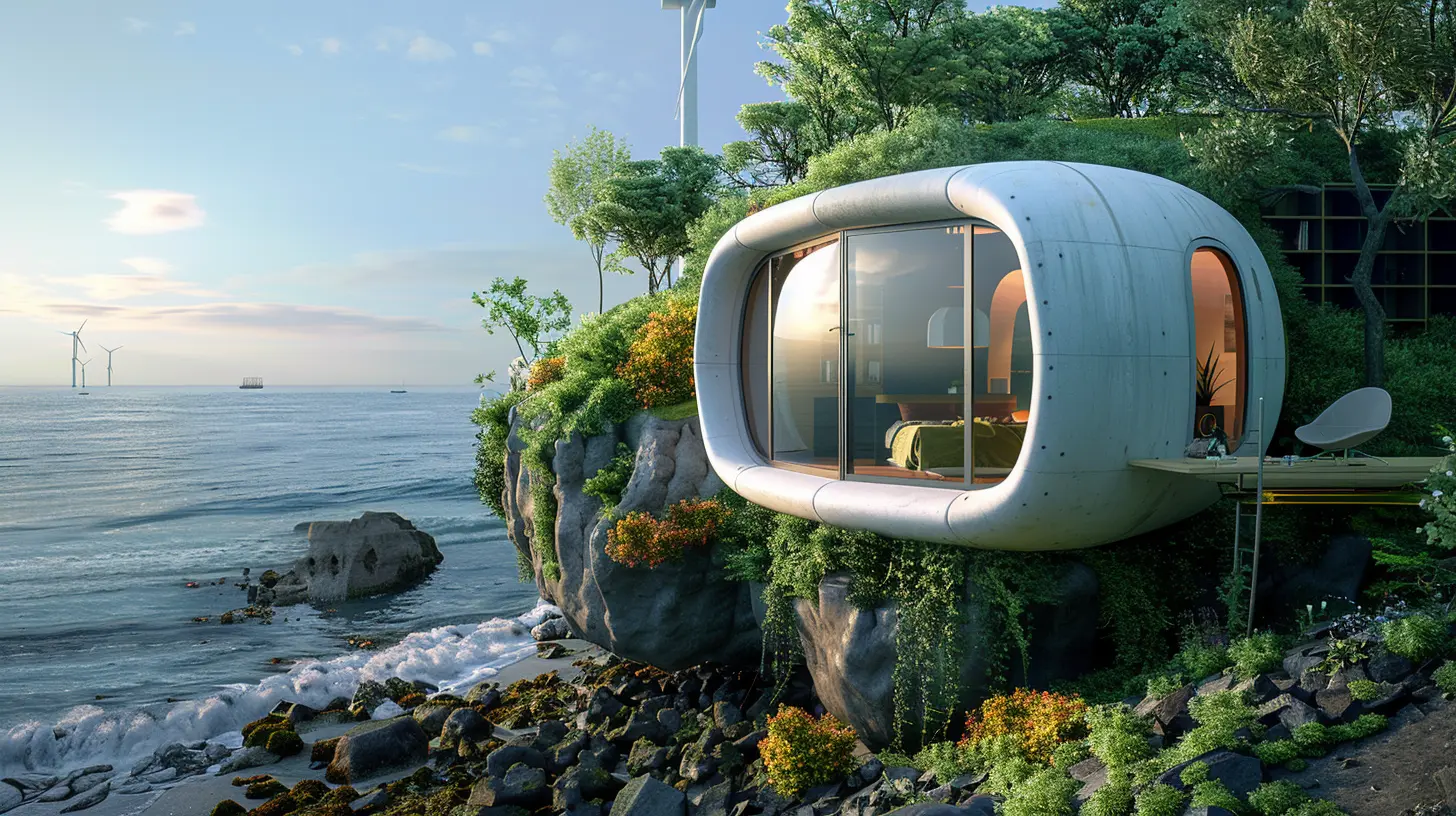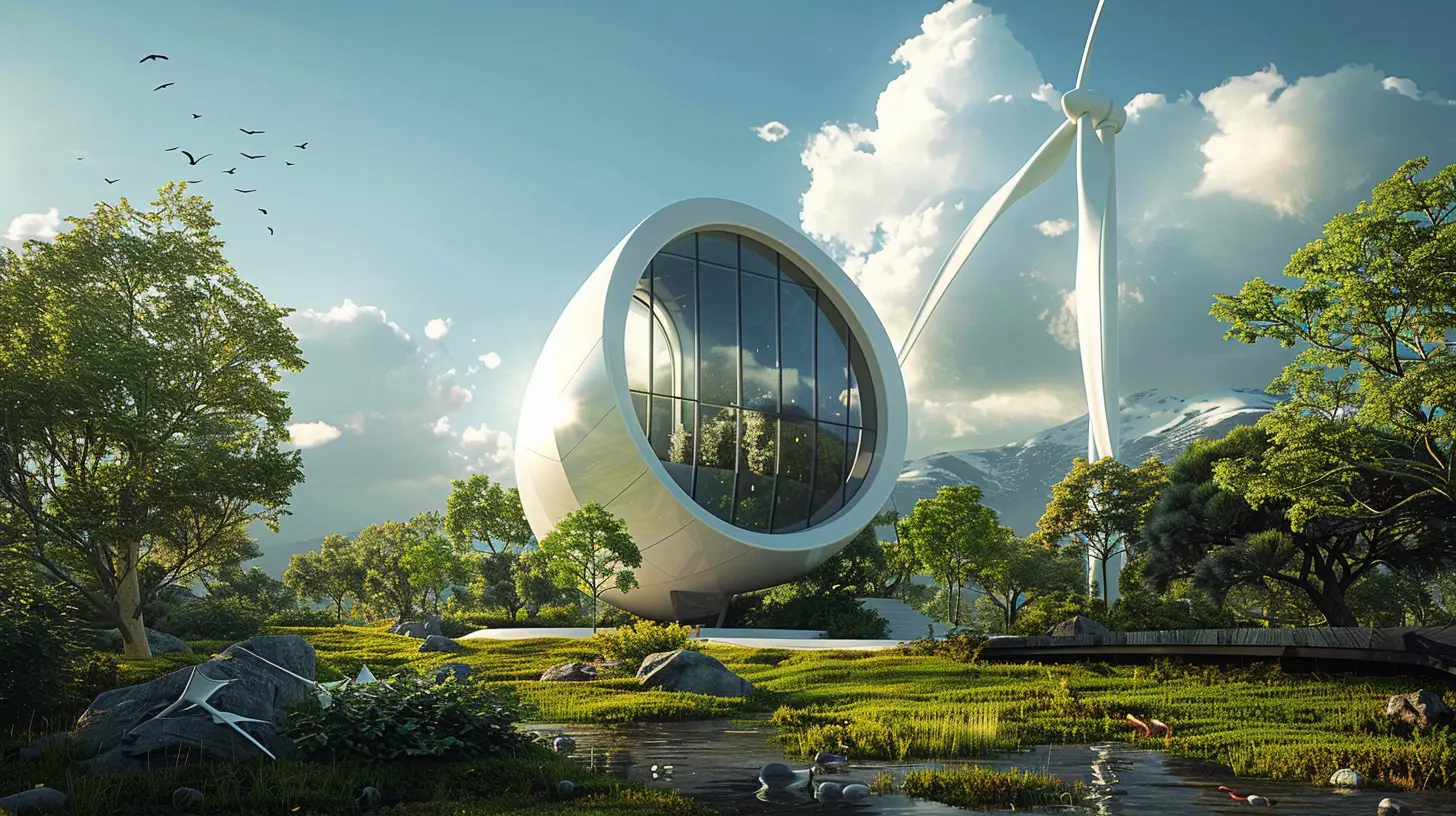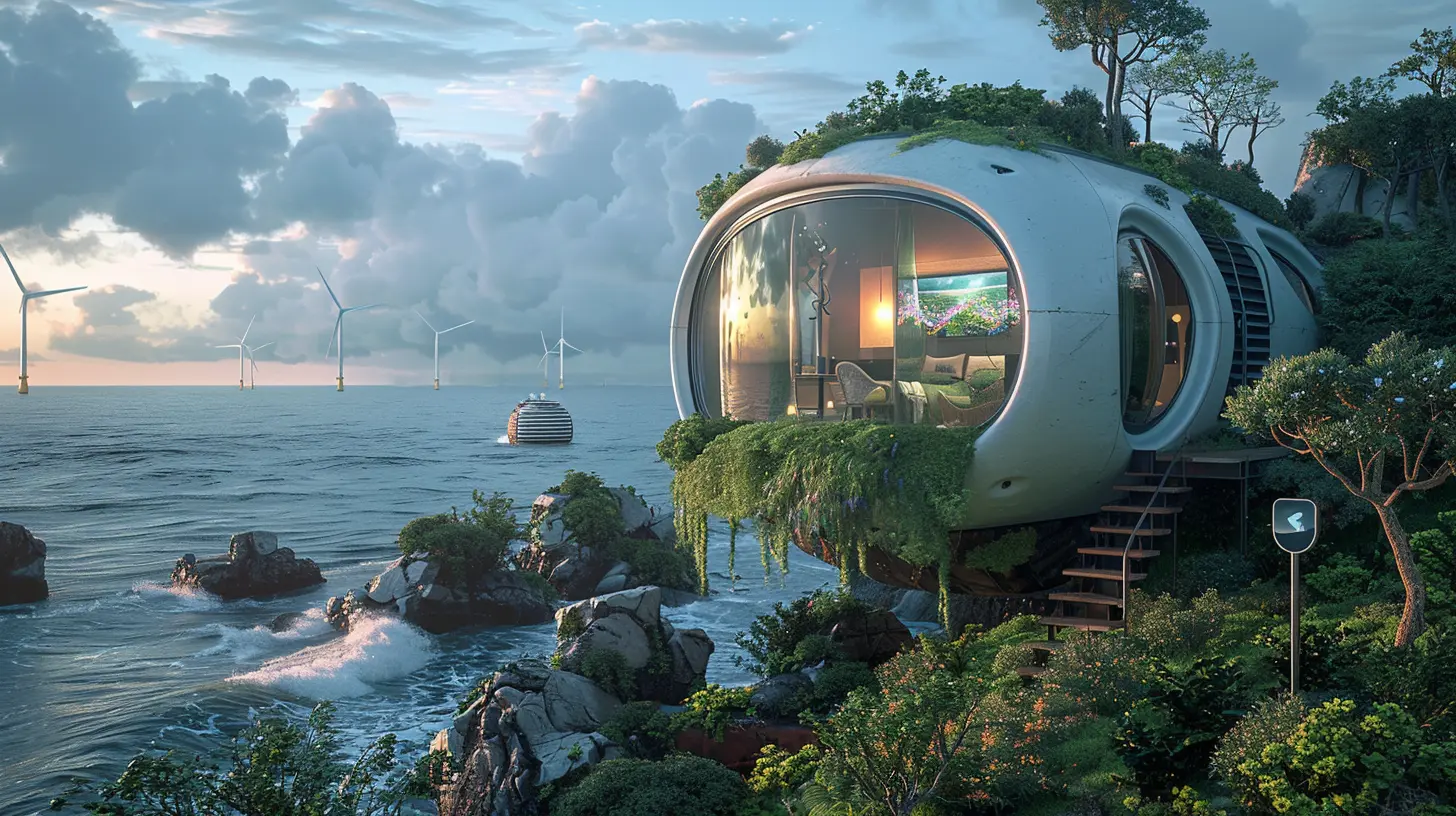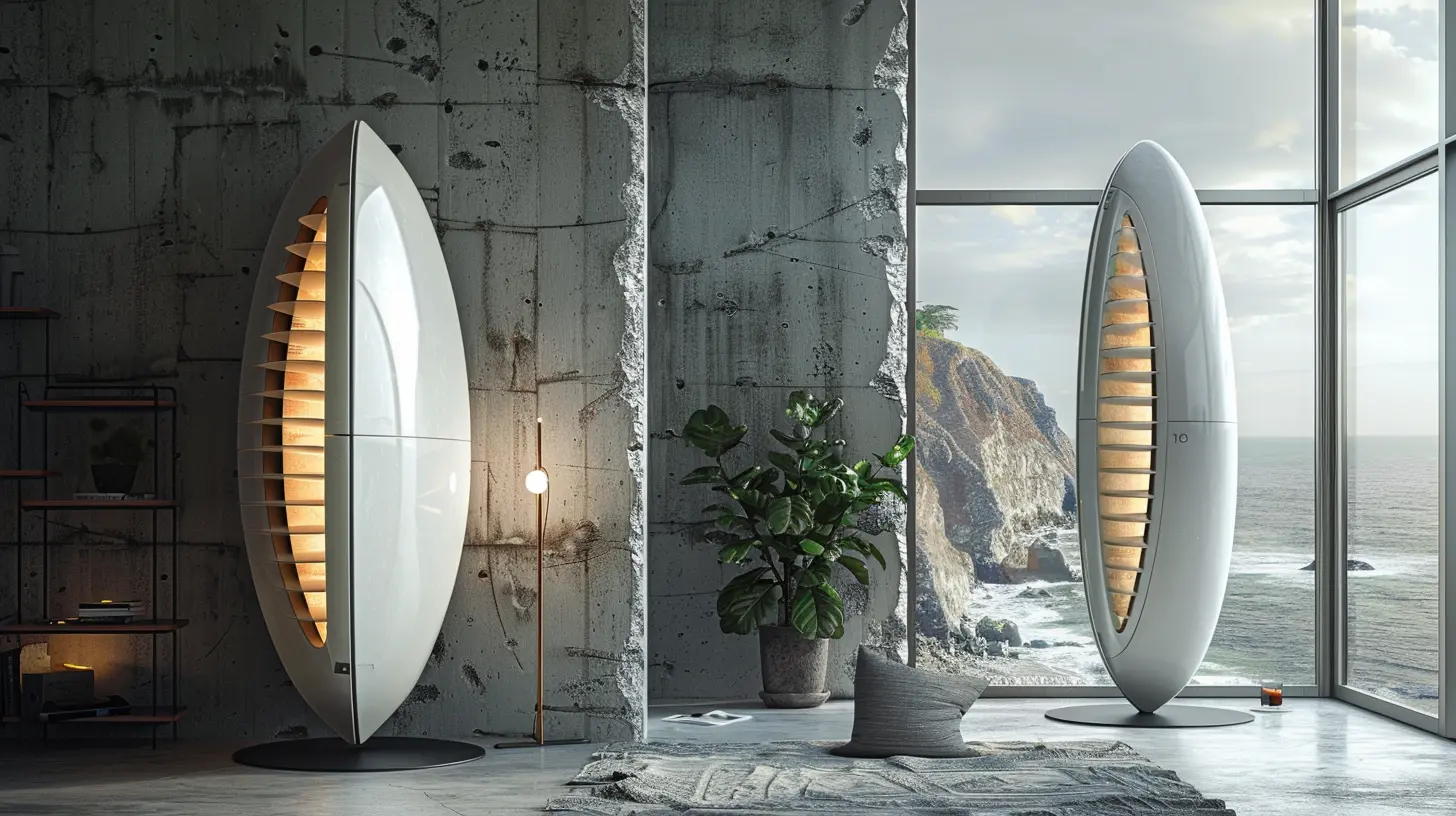The Future of Wind Energy: Small-Scale Solutions for Your Home
6 September 2025
Introduction
Imagine cutting down your electricity bill while also reducing your carbon footprint—sounds like a win-win, right? Wind energy is no longer just for massive turbines on wind farms. Thanks to technological advancements, small-scale wind solutions are becoming a reality for homeowners.
If you've ever thought about producing your own clean energy, now is the perfect time. Small wind turbines aren’t just efficient; they’re a step toward energy independence. Let’s dive into the future of wind energy and how small-scale solutions can power your home. 
Why Wind Energy Matters
We’re in an era where renewable energy is no longer optional—it’s essential. Fossil fuels are running out, electricity rates are unpredictable, and climate change is a growing concern. Wind energy offers a powerful solution to these issues. Here’s why:- Sustainable & Infinite – Wind is a renewable resource that never runs out. Unlike fossil fuels, harnessing wind power doesn’t deplete Earth’s natural resources.
- Cost-Effective in the Long Run – While the initial installation might seem expensive, wind energy pays for itself over time by significantly cutting electricity bills.
- Reduces Carbon Footprint – A small wind turbine can reduce the average household’s carbon emissions by several tons each year.
- Energy Independence – No more reliance on unstable energy prices or power grid fluctuations. A home-based wind turbine puts control back in your hands.
With benefits like these, it’s no wonder more homeowners are turning to wind energy. But how practical is it? Let’s take a closer look at how small-scale wind turbines work. 
How Small-Scale Wind Turbines Work
A small wind turbine operates using the same principles as large-scale wind farms, just on a smaller scale. It converts wind energy into electricity that can power your home. Here’s a simple breakdown of the process:1. Wind Blows Over the Blades – The turbine’s blades catch the wind, causing them to spin.
2. Blades Turn the Rotor – The rotor is connected to a generator, which converts the mechanical energy into electrical energy.
3. Electricity Is Stored or Used – The generated electricity can either be used immediately, stored in batteries, or sent back to the grid for credits.
The best part? If your turbine produces more energy than you use, you might even get paid for sending electricity back to the grid! 
Small-Scale Wind Energy Solutions
Not all homes are suited for large wind turbines, but don’t worry—there are plenty of small-scale solutions that can still make a big impact.1. Residential Wind Turbines
These are the most common small-scale wind energy solutions for homes. They typically range from 1 kW to 10 kW and can generate enough electricity to power appliances, lights, and even entire homes in windy locations.- Best For: Homes with consistent wind speeds of at least 9 mph.
- Pros: Lower electricity bills, eco-friendly, potential tax incentives.
- Cons: Requires an initial investment, may need local permits, can be noisy.
2. Vertical Axis Wind Turbines (VAWTs)
Unlike traditional wind turbines, which have horizontal blades, VAWTs have vertical ones. They’re designed for urban environments or places with unpredictable wind patterns.- Best For: Urban areas, rooftops, and small properties.
- Pros: Compact design, works in low wind conditions, quiet operation.
- Cons: Less efficient than traditional turbines, lower power output.
3. Hybrid Wind-Solar Systems
Why choose between solar and wind when you can have both? Hybrid systems combine wind and solar panels to ensure power generation even when one resource is low.- Best For: Any location with varying weather conditions.
- Pros: More consistent energy production, maximizes renewable sources.
- Cons: Higher upfront cost, requires more space.
4. Micro Wind Turbines
For those looking for a small-scale, low-cost option, micro wind turbines (under 1 kW) are perfect. These are great for charging batteries, powering small devices, or even supplementing grid power.- Best For: Off-grid cabins, boats, RVs, and emergency backup power.
- Pros: Affordable, easy to install, great for small applications.
- Cons: Limited power output, not suitable for large-scale energy needs. 
Factors to Consider Before Installing a Wind Turbine
Excited about wind power? Before you invest, here are some key factors to consider:1. Wind Speed & Location
Wind turbines work best in open areas with consistent wind flow. If your home is surrounded by tall buildings or trees, wind energy may not be efficient. Use wind maps or anemometers to measure wind speeds in your area before making a decision.2. Local Regulations & Permits
Many areas require permits before installing a wind turbine. Check with your local authorities to ensure you meet zoning laws, noise regulations, and height restrictions.3. Upfront Costs & ROI
The initial costs of small wind systems can range from $3,000 to $50,000 depending on size and installation. However, tax credits and incentives can help offset these expenses. Calculate the return on investment (ROI) to determine if it’s financially viable for your home.4. Maintenance Requirements
Wind turbines require periodic maintenance to ensure optimal performance. Routine checks on the blades, generator, and battery storage system can help prevent unexpected repair costs.The Future of Small-Scale Wind Power
Advancements in wind energy technology are making home-based wind solutions more accessible and efficient than ever. Here are some exciting developments shaping the future of small-scale wind power:1. Smart Wind Turbines
Just like smart homes, smart wind turbines use AI and IoT to optimize energy production based on real-time weather conditions. They adjust blade angles and rotational speeds for maximum efficiency.2. More Efficient Blade Designs
Researchers are working on innovative blade designs that capture wind power more effectively, even at low speeds. This means future turbines will generate more energy with less wind.3. Affordable & Scalable Solutions
As demand for small wind turbines grows, production costs are decreasing, making them more affordable for homeowners. In the future, we may see modular systems that allow homeowners to expand capacity as needed.4. Integration with Home Energy Storage
Pairing wind turbines with next-generation battery storage systems will allow homeowners to store excess power for use during outages, ensuring a reliable energy supply.Conclusion
The future of wind energy isn’t just about massive wind farms—it’s about empowering homeowners with small-scale, cost-effective solutions. Whether you're looking to cut energy costs, reduce your carbon footprint, or become more energy independent, small wind turbines offer a promising path forward.If you have the right wind conditions, location, and budget, investing in wind energy could be one of the smartest and most sustainable choices you make for your home. The wind is always blowing—why not turn it into power?
all images in this post were generated using AI tools
Category:
Environmental TechAuthor:

Jerry Graham
Discussion
rate this article
1 comments
Adam Alexander
Could your rooftop harness the winds of tomorrow?
September 10, 2025 at 4:50 AM

Jerry Graham
Absolutely! Harnessing wind energy at home can be a game-changer, maximizing renewable energy use and reducing reliance on traditional power sources.


